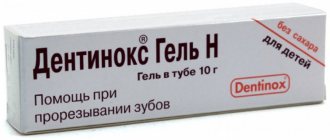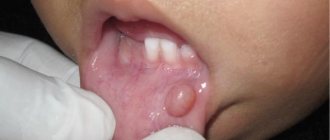– substances of natural or semi-synthetic origin that inhibit the growth of microorganisms or cause their death.
Antibiotics only affect microorganisms. Their effect does not apply to viruses or fungi. Therefore, it is advisable to use antibiotics for diseases caused by microbes. In case of viral diseases (hepatitis, influenza, etc.), their use makes no sense and can even cause harm due to side effects.
Depending on the chemical structure, antibiotics are divided into groups , for example, fluoroquinolones, penicillins, tetracyclines, macrolides, cephalosporins, etc.
Each group may contain antibiotics of different generations (for example, in the fluoroquinolone group, ciprofloxacin belongs to the first generation, levofloxacin to the second, and moxifloxacin to the third).
Basic principles of antibacterial therapy
There are certain requirements for prescribing antibiotics.
The antibiotic prescribed by the doctor must penetrate well into the tissues where there is a purulent-inflammatory process. For example, lincomycin penetrates well into bone tissue and is used for osteomyelitis, amoxiclav - into soft tissues, and can be used in the treatment of boils and erysipelas.
The antibiotic must have an inhibitory effect on the microorganism that caused the inflammation. For example, it makes no sense to use Tsifran for anaerobic infections (caused by anaerobic microorganisms), because Tsifran has no effect on them. In such a situation, Avelox is indicated - an antibiotic that acts incl. and anaerobic microorganisms.
To determine the sensitivity of the microorganism to antibiotics, a culture is taken from the wound. The difficulty is that the doctor usually receives the culture result in about 5–8 days, and an antibiotic must be prescribed immediately upon detection of microbial inflammation. In such a situation, empirical antibiotic therapy is used, the meaning of which is to prescribe an antibiotic that suppresses the most likely causative agent of the infection. For example, for a boil or carbuncle, antibiotics are prescribed that suppress Staphylococcus aureus, because It is this microorganism that most often causes suppuration in boils and carbuncles. Then, when the culture result comes, you can change the antibiotic to the one to which the microbe is sensitive in this particular case (if this is still necessary).
Antibiotics should be used to minimize the risk of side effects and complications in a given patient. For example, fluoroquinolones should not be prescribed to patients with epilepsy; aminoglycosides are not suitable for patients with hearing loss.
Indications for the use of antibiotics
Infectious inflammation of the ovarian appendages is known as adnexitis. For therapy, the use of antibacterial drugs of various forms is mandatory. Injection forms are mainly relevant (into a muscle, into a vein, and medications are also available in the form of powders for dilution or ready-made solutions). After a course of injections, the doctor prescribes tablet forms of the drugs. Also, in some cases, suppositories or suspensions of antibacterial agents may be prescribed.
The main antibiotics that are prescribed for the inflammatory process in the appendages:
- ceftributen, cedex (kill pathogens such as gonococci, streptococci, enterococci; taken mainly in capsule form)
- azithromycin, zoomax (have a very wide spectrum of action)
- metronidazole
- erythromycin (relevant against mycoplasmas, chlamydia; prescribed by injection into a vein as an additional therapy)
- ciprofloxacin, ceftriaxone, ciprolet (can be used instead of the above medications)
Effective drugs from the nitromidazoles group:
- metrogil
- metronidazole
- trichopolum
The doctor prescribes aminoglycosides only if the disease is very severe, or if the infection has spread throughout the body, spreading to other organs.
Routes of administration of antibiotics
- oral (by mouth), intramuscular and intravenous - should also be taken into account in outpatient practice. Thus, for patients receiving treatment at home, it is not advisable to prescribe antibiotics that require three intramuscular injections (for example, cefazolin), because such a patient will have to go to the treatment room three times a day.
Only a doctor should prescribe an antibiotic , because the use of antibiotics without indications or when there are contraindications can cause side effects and complications, and ultimately cause harm rather than benefit.
Pharmacodynamics of antibiotics
Antibiotics, which are classified as tetracyclines, kill the ability of the pathogen to multiply. They are effective against the following flora:
- gonococci
- streptococci
- staphylococci
- enterobacteria
- pertussis stick
- salmonella
- klebsiella
- spirochetes
- mycoplasma
- chlamydia
Antibacterial drugs from the fluoroquinol group suppress DNA gyrase and topoisomerase, disrupt DNA synthesis, and through these mechanisms they help cope with the disease. If the pathogen is resistant to 1st generation quinolines (which is revealed during therapy), then the doctor prescribes one of the fluoroquinolones. Drugs of this group kill mycobacteria, mycoplasma and pneumococci, but of the 3rd and 4th generation, and the 2nd generation is less effective. Some enterococci can also be destroyed by fluoroquinolones.
Antibiotic overdose
If an overdose of tetracyclines occurs, the side effects of the drugs become stronger. Side effects are listed above. Treatment consists of taking medications to relieve symptoms. An overdose of macrolide antibiotics is not life-threatening. Stool disorders, nausea appear, and heart rhythm changes.
Fluoroquinols in excessive dosage do not pose a threat to the patient’s life. Symptoms that arise are treated outside the hospital. Epileptic seizures can occur extremely rarely. An overdose of these drugs affects the joints, liver, cardiovascular system and tendons.
Side effects of antibiotics
Tetracycline antibiotics can lead to increased pressure inside the skull and dizziness. The number of neutrophils, platelets, and hemoglobin in the blood changes. Other side effects of these medications include:
- nausea
- loss of appetite
- inflammation in the gastrointestinal tract
- diarrhea or constipation
- kidney dysfunction
- allergic manifestations
- anaphylactic shock
Some of these antibiotics prescribed for inflammation of the appendages lead to candidiasis and the development of excessive sensitivity to ultraviolet rays. Tetracyclines in children can disrupt the formation of bones, including teeth, and the shade of the enamel changes.
Macrolides can lead to the following side effects:
- allergic manifestations
- reinfection with pathogen resistance to erifomycin
- pain in the gastrointestinal tract
- nausea
- drooping upper eyelid
- vision problems
- significant pupil dilation
- paralysis of the oculomotor muscles
Fluoroquinolones also cause a number of side effects, one or part of which may be noted by the patient:
- loss of appetite
- pain in the gastrointestinal tract
- diarrhea or constipation
- nausea
- poor sleep, or waking up in the middle of the night
- headache
- convulsions
- trembling throughout the body
- decreased vision
- manifestations of allergies
Rare side effects of taking fluoroquinolones include:
- inflammation in tendons, joints
- negative impact on kidney function
- tendon ruptures
- heart rhythm problems
- colon diseases
- oral candidiasis
- thrush in female patients
Principles for choosing antimicrobial drugs
Self-medication with antibiotics is strictly prohibited, since uncontrolled use of potent drugs can weaken the body and worsen the body's defense reactions. The drugs are selected exclusively by the doctor, taking into account the form of the disease and the patient’s condition.
Indications for prescribing antibiotics for the treatment of infectious diseases are the following:
- Development of bacterial microflora in the respiratory tract. This is indicated by sputum with a green or yellow tint, which comes out with a cough.
- Maintaining body temperature above 38.5°C for more than 4 days.
- Severe weakness and the appearance of severe fatigue with minimal exertion.
- The presence of purulent mucus in the stool.
Before a certain type of antibiotic is prescribed, a bacteriological culture must be carried out. To do this, take a swab from the nasopharynx and trachea, as well as mucus from the stool. Samples are placed in a nutrient medium to determine the type of microorganism. After this, a group of antibiotics is selected that destroy certain bacteria.
To ensure that the chosen antibiotic does not provoke a deterioration in the general condition, the following general tests are performed:
- Blood. During the test, the number of main components is determined. When using antimicrobial drugs, a decrease in their levels may occur, so it is important to exclude the possibility of critical indicators.
- Urine. Testing allows you to determine the condition of the urinary system and prevent possible inflammatory processes due to increased stress on the organs when removing the antibiotic from the body.
Also carried out:
- Biochemical blood test to exclude exacerbations of existing pathologies when using potent antimicrobial drugs.
- CT scan of the chest to assess the extent of damage to the lung tissue and select the dosage of the antibiotic.
Pharmacokinetics of antibiotics
Approximately seventy percent of the drug taken from a number of tetracyclines, which are prescribed by doctors for the diagnosis of inflammation of the appendages, is absorbed into the gastrointestinal tract. The active substance “distributes” through tissues and fluids, and during pregnancy enters both the placenta and the fetus. Tetracycline antibiotics are excreted unchanged from the body through urine and excrement.
Absorption may be greater or lesser, depending on the type of medicine and its form, as well as whether it is taken before, during or after a meal. This point should be indicated by the attending physician when developing a treatment regimen. Particular care must be taken when timing meals and taking ezithromycin. Josamycin and clarithromycin can be taken without taking into account lunch/dinner hours.
Macrolides are collected in large quantities in the blood serum and body tissues. During inflammation in the body, macrolides spread well through the air, getting inside the cells and concentrating there. These drugs do not cross the blood-ophthalmic barrier. Macrolides break down into simpler elements in the human liver and are excreted through the gallbladder. The half-life is different for all drugs in the group, but the period is a minimum of 1 hour, a maximum of 55 hours. Renal failure when taking drugs from the macrolide group does not change the above half-life figures.
Absorption of drugs from the fluoroquinolone group occurs largely in the gastrointestinal tract after the patient takes the tablet. 2 hours after administration, the highest concentration of the drug in the patient’s blood occurs. These antibiotics can also affect the fetus, so pregnancy is a contraindication for use. These drugs are excreted mainly by the kidneys; the gallbladder also plays a small role.
Fluoroquinolones, with the exception of norfloxacin, accumulate in organs and tissues of the human body. Different drugs in this group have different rates of breakdown into smaller particles, with pefloxacin breaking down the most. The drugs are eliminated by 50% in 3-14 hours, the maximum half-life in some cases is twenty hours. If the patient’s renal function is impaired, then the drugs are eliminated longer; this issue should be clarified with the attending physician and be sure to inform him about all diseases, in addition to inflammation of the appendages. When determining the required therapeutic dose, severe renal failure must be taken into account if it is present in a patient with inflammation of the appendages.
Treatment of inflammation of the appendages during pregnancy
Pregnancy is a contraindication for the use of tetracycline drugs, because these drugs enter the fetus through the placenta and can accumulate in its organs and tissues. Because of this, the unborn child’s skeleton will develop incorrectly. Some macrolides are also not used during pregnancy. Clarithromycin has been proven to be harmful to the fetus. But the effects of roxithromycin and midecamycin have not been sufficiently studied today.
The following drugs are relatively safe for the treatment of inflammation of the appendages of pregnant women:
- spiramycin
- erythromycin
- josamycin
If no other treatment is possible, and inflammation of the appendages in a pregnant woman is severe, doctors may resort to prescribing azithromycin. Drugs from the fluoroquinolone group are prohibited from being used during pregnancy.










